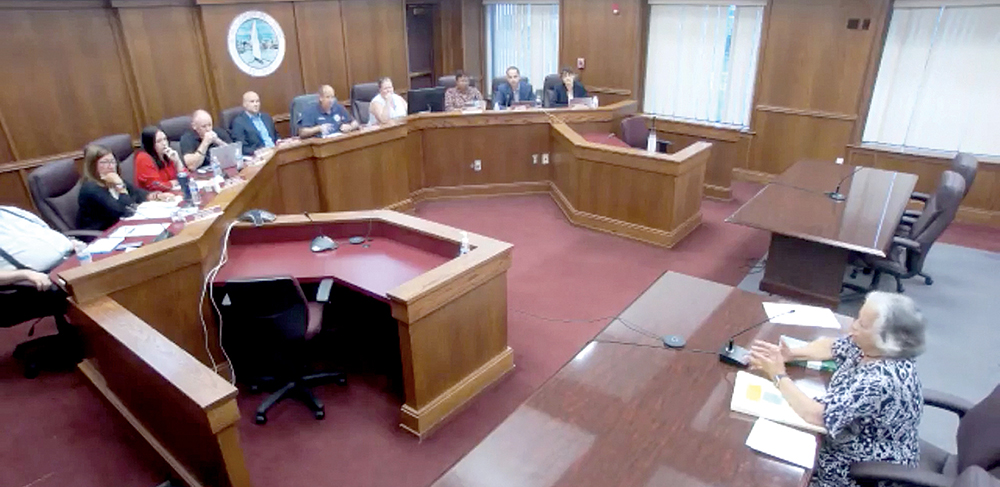
By Sunayana Prabhu
RED BANK – The borough’s Historic Preservation Commission (HPC) is gearing up for a reboot after a brief pause. The Red Bank Council wants to empower the commission through a new ordinance that would reinstill its authority to preserve the borough’s rich history.
Before the new government took over in July, the HPC asked land use attorney Michelle Donato to draw up new guidelines to bolster the commission’s mandate with a clearly defined ordinance.
“The historic preservation commission as it stood with its existing ordinance did not have any more power than the environmental committee,” deputy mayor and council member Kate Triggiano said during the Aug. 24 council meeting, explaining why the HPC had been put on pause. The HPC “could recommend, but it didn’t have the power” to drive decisions, Triggiano said. And, if it did act, the HPC “could have been sued for acting outside of the limits of (its) actual power.”
“No one was talking about disbanding the HPC,” Mayor Billy Portman clarified at the outset of the meeting. The status of the HPC may have seemed like it was on shaky ground at the beginning of the year, Portman said, but the council actually wants to empower the commission even more.
Donato presented council members with a review of the HPC’s current ordinance and recommended changes to reinforce its governance.
The municipal land use law provides guiding principles when adopting ordinances, but Donato said the borough’s current HPC ordinance appears to have inconsistencies with that law.
Donato delved into the “unusual statute” adopted in 1985 to empower municipalities to regulate historic preservation.
The “two powers” of the commission – advising the planning and zoning boards and the discretion to issue permits – Donato said, “can sometimes be confusing and difficult.”
Nancy Facey-Blackwood, a council member who is currently liaison to the environmental commission, agreed that the language regarding the HPC’s advisory power is precisely the same as the environmental commission’s, making its position purely advisory. So, “there’s no negative impact,” Donato said, if an application is not sent to the HPC, and the planning and zoning boards “do not have to follow through with anything.”
However, since it is common for the planning and zoning boards to approve architectural plans of historic significance, the HPC’s regulation is equally important. “It should be part of the planning family in your community,” Donato said, “not separate and apart.”
Council member Kristina Bonatakis, who has served on the HPC, agreed that “a really important piece of this commission succeeding is its alignment with the rest of the borough’s planning board as well as the governing body and I don’t think we had that.” Bonatakis added that the commission itself “was working the process of defining its own scope, which I don’t think is very natural or conducive to that kind of harmony with the borough.”
Donato suggested refining the ordinance for the HPC to be able to make an impact on development applications because, she said, “It was not clear that there is this distinction in functions, the advisory function and the function of the certificates of appropriateness or permits.”
Donato also recommended clear design guidelines and criteria required by land use laws that she said were missing in the borough’s prior Master Plan. The guidelines would be created by preservation consultants and serve as a “bible” to historic property owners and guide the commission on how buildings are retained, modified or expanded.
“The purpose of preservation is not to stop development,” Donato said. “It is to maintain the historic character of your community and allow development to move forward at the same time.”
Donato endorsed a “three-tier system” to eliminate ordinary approval requests such as replacing deteriorated pieces of siding. She suggested tightening up minor applications such as approving a sign or a fence that the chairperson could address without going to the full commission. But everything beyond these minor specifications, such as expanding or changing a structure, would need a permit and be subject to review by the full commission. The three-tier system “gives people the ability to do the right thing and not have to get dragged through a bureaucratic process,” Donato said, “a very important component of the ordinance that you don’t currently have.”
The current ordinance also does not address the demolition of structures which is the “hardest part of any historic ordinance,” Donato said. Portman asked Donato about governing non-historic buildings within the historic district that are characterized by federal law as “non-contributing” buildings. Donato said design consultants can address these buildings “in a way that helps to create harmony instead of disharmony.”
The HPC is a government body established to promote the borough’s historic resources, including historic buildings, structures and the districts where they are located. According to the borough’s website, the Red Bank HPC is comprised of five unsalaried regular members appointed by the mayor for a four-year term. The council is expected to reestablish the commission after the final review of the new ordinance.
This article originally appeared in the August 31 – September 6, 2023 print edition of The Two River Times.














